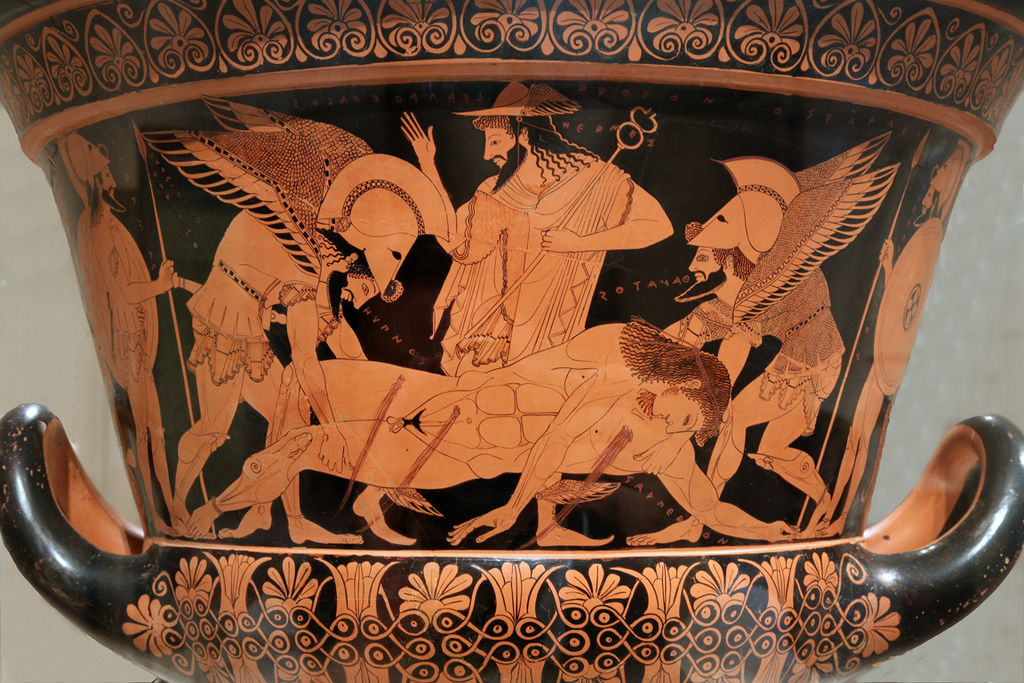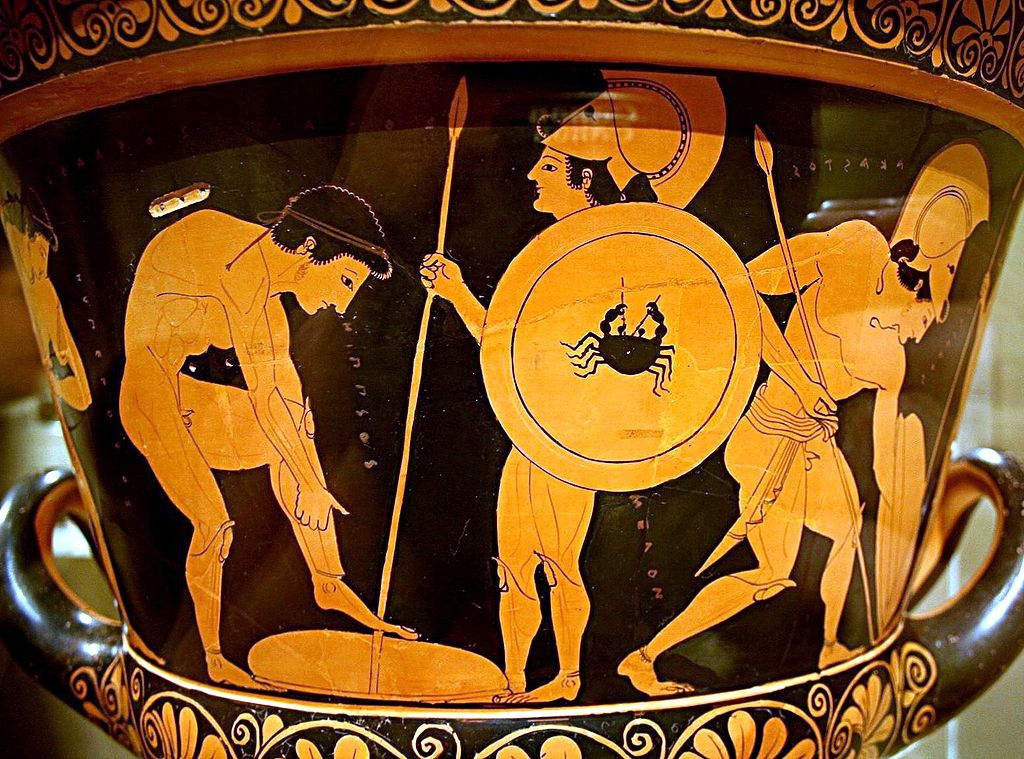
A new computer app from the international police authority Interpol makes it possible for art collectors, museums — and amateur sleuths — to determine if the piece of art they are looking at has been stolen.
The new app not only combats art crime — which Greece has suffered throughout its long history — it also protects the cultural heritage of every nation at a time when there is increased interest in repatriating stolen works of art from around the world.
Amateur sleuths, collectors and dealers alike who care to know whether or not a piece of art was taken illegally can use the new “ID-Art” app to access the international organization’s database of 52,000 stolen artworks.
The world’s largest police organization now has a listing of more than 52,000 pieces of art in its database of stolen works from all over the world.
Technology may prove to be a boon for the scourge of Greece and other nations which have suffered the loss of priceless art and artifacts over the centuries.
Interpol’s database includes the earliest-known looted antiquities to artworks that were stolen very recently – including Van Gogh’s “The Parsonage Garden at Neuen in Spring,” painted in 1884, which was taken from a museum in the Netherlands during a Covid-19 lockdown.
Priceless artworks belonging to world cultural heritage such as Jan Vermeer’s “The Concert,” painted from 1663-1666, stolen from the Isabella Stewart Gardner Museum on March 18, 1990, are also included. The Vermeer has never been recovered.
Twelve other artworks of inestimable value also taken from the Gardner Museum and never recovered are also featured on the database. The Boston heist comprised the largest art theft in modern history.

Last week, Interpol made the identification of these and much less well-known artworks easier with the debut of a new app that helps to make the process of identifying and reporting stolen art works as simple as a quick search on a database via smartphone.
With a motto of “Capture the Art– Capture the Criminals,” Interpol makes real-time headway into the murky world of art provenance with the new app, enabling those with good intentions to determine the origin of any artwork they suspect may have been stolen at some point in its history.
Users simply upload any images they can get of the artwork or input keywords to find information on objects of art that are currently missing, according to Valentina Di Liscia for Hyperallergic, an online forum for art lovers.
Pop-ups that are built into the app will tell users who indeed do see that they have come across a piece of stolen art that they should report their findings immediately to the police.
According to the Interpol statement, the public can now assist the international policing agency in combatting the ongoing scourge of art and artifact trafficking. Collectors — including those who already own a certain piece of art they suspect may have been stolen — can use ID-Art’s reverse-image search feature to determine if the artwork is indeed of dubious provenance.
A Forbes story by Carlie Porterfield states that UNESCO estimates that the market for looted items of cultural heritage is worth almost $10 billion every year, although it is impossible to determine an exact number since the black market is involved.
Criminal groups — and even militant groups, according to Interpol — often use the trading of looted art and artifacts as a funding base, says David Klein writes in a report for the Organized Crime and Corruption Reporting Project (OCCRP).
Incredibly, through careless blunders or the turning of a blind eye to earth thieves, many works of art that were originally looted or even stolen in modern times still show up at major auction houses around the world and in the displays of world-renowned museums.
Interpol Secretary General Jürgen Stock says in the statement “In recent years we’ve witnessed the unprecedented ransack by terrorists of the cultural heritage of countries arising from armed conflict, organized looting and cultural cleansing.
“This new tool is a significant step forward in enhancing the ability of police officers, cultural heritage professionals and the general public to protect our common heritage.”
The Euphronios Krater (or Sarpedon Krater) is an ancient Greek terra cotta calyx krater, a bowl used for mixing wine with water. Created in approximately the year 515 BC, it is the only complete example of the surviving 27 vases painted by the renowned ceramics master Euphronios and is considered one of the finest Greek vase artifacts anywhere in existence.
Part of the collection of the Metropolitan Museum of Art from 1972 to 2008, the vase was repatriated to Italy under an agreement negotiated in February 2006, and it is now in the collection of the Archaeological Museum of Cerveteri as part of a campaign to return stolen works of art to their place of origin.
The krater is decorated with two scenes. An episode from the Trojan War is shown on the obverse, depicting the death of Sarpedon, the son of Zeus and Laodamia. In the scene of Sarpedon’s death, the god Hermes directs the personifications of Sleep (Hypnos) and Death (Thanatos) to carry the fallen away to his homeland for burial.
The reverse of the krater shows a contemporary scene of Athenian youths from the sixth century BC arming themselves before battle.
Records in Italian courts indicate the krater was looted from an Etruscan tomb in Greppe Sant’Angelo near Cerveteri in December of 1971.
In 2006, following the trial of Giacomo Medici and related disclosures about antiquities smuggling, the Metropolitan Museum of Art and the Italian government signed an agreement under which ownership of the Euphronios Krater was returned to Italy.

Interpol officials state that, by making its stolen artwork database fully accessible and searchable by the public, it hopes to make it easier for all those who view, sell or buy art to certify that their actions are legal, according to the Forbes report. Using languages such as Arabic, English, French and Spanish, the app is searchable by most people around the world.
Interpol points out in their statement that the app’s pilot phase has already proven successful; incredibly, Italian police have already employed it to identify two stolen statues earlier this year.
And in Holland, the Dutch Art Crime Unit was able to locate and recover two stolen paintings after looking at the database of the online sales catalogue published by an auction house in Amseterdam.
New Interpol App can even map threatened churches, other sites
Perhaps most notably, the new Interpol app is also geared toward the preservation of buildings and sites that are currently threatened.
The ID-Art app also allows Users to take and upload photos of threatened heritage sites of any kind; for example, a church in a war zone or where there is a danger of becoming a victim off religious cleansing to create what the users call a “site card” with a timestamp, a geographic location and a detailed description of the scene, according to Smithsonian Magazine.
Such images from interested people all around the world can create a “bank of digital evidence” if the site is ever looted or destroyed or if artifacts from it suddenly appear on world markets, the Smithsonian report says.
In the Hyperallergic article, DeLiscia states, however, that Interpol’s database of stolen art can only record some of the innumerable world treasures that have been stolen over the history of humanity.
She notes that the Benin Bronzes —one of the greatest examples of art looting on the part of British colonialists — are not listed as being “stolen” despite the well-recorded looting of the African treasures in 1897.
As Di Liscia says, “I guess the definition of ‘stolen’ is subjective.”
See all the latest news from Greece and the world at Greekreporter.com. Contact our newsroom to report an update or send your story, photos and videos. Follow GR on Google News and subscribe here to our daily email!



